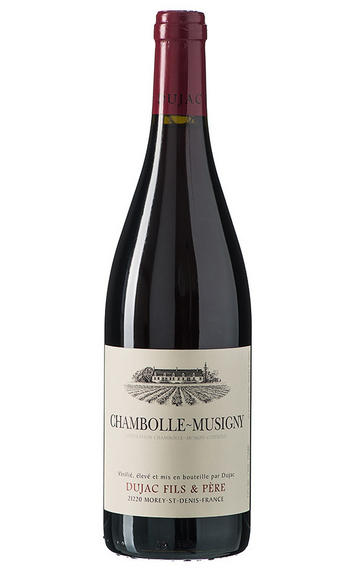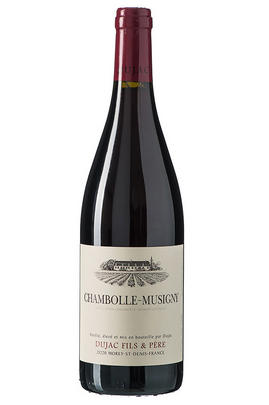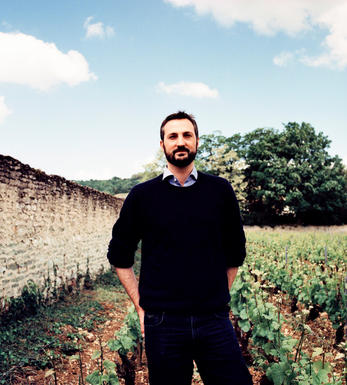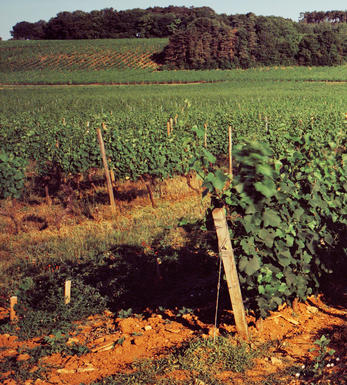
2011 Chambolle-Musigny, Dujac Fils & Père, Burgundy

Critics reviews
Jancis Robinson MW - jancisrobinson.com - Jan 2013
About this WINE

Dujac Fils et Pere
Starting with the 2000 vintage, Jeremy Seysses set up a negociant business with his father Jacques in order to make attractive and well-priced wine from their own village Morey-St. Denis, supplemented by a wine each from Gevrey-Chambertin and Chambolle-Musigny. The involvement of Jeremy at the Domaine has encouraged a gentle evolution in style, though the core Dujac principles of elegance and intensity remain firmly in place. The wines retain their characteristic smokiness in youth which develops into an ethereal leafy quality with age. An excellent source for good value Burgundy.

Chambolle Musigny
Chambolle produces the most elegant wines in the Côte de Nuits, having more active chalk and less clay in the soil than the other villages. The wines may be a little lighter in colour and less tannic than Gevrey-Chambertin but they have a sublime concentration of fruit. Village Chambolle-Musigny usually provides excellent value.
Le Musigny is one of the top half-dozen vineyards in Burgundy, producing wines of extraordinary intensity and yet with a magical velvety character. Les Amoureuses is immediately appealing, a wonderfully sensual wine which deserves Grand Cru status. Bonnes Mares tends to have a firmer structure and ages very well
- 94 hectares of village Chambolle-Musigny.
- 61 hectares of Premier Cru vineyards (24 in all). The finest vineyards include Les Amoureuses, Les Charmes, Les Fuées, Les Baudes and Sentiers.
- 24 hectares of Grand Cru vineyard - Bonnes Mares and Le Musigny.
- Recommended producers: de Vogüé, Mugnier, Roumier, Barthod.
- Recommended restaurant: Le Chambolle

Pinot Noir
Pinot Noir is probably the most frustrating, and at times infuriating, wine grape in the world. However when it is successful, it can produce some of the most sublime wines known to man. This thin-skinned grape which grows in small, tight bunches performs well on well-drained, deepish limestone based subsoils as are found on Burgundy's Côte d'Or.
Pinot Noir is more susceptible than other varieties to over cropping - concentration and varietal character disappear rapidly if yields are excessive and yields as little as 25hl/ha are the norm for some climats of the Côte d`Or.
Because of the thinness of the skins, Pinot Noir wines are lighter in colour, body and tannins. However the best wines have grip, complexity and an intensity of fruit seldom found in wine from other grapes. Young Pinot Noir can smell almost sweet, redolent with freshly crushed raspberries, cherries and redcurrants. When mature, the best wines develop a sensuous, silky mouth feel with the fruit flavours deepening and gamey "sous-bois" nuances emerging.
The best examples are still found in Burgundy, although Pinot Noir`s key role in Champagne should not be forgotten. It is grown throughout the world with notable success in the Carneros and Russian River Valley districts of California, and the Martinborough and Central Otago regions of New Zealand.


Buying options
Add to wishlist
Description
Rather spicier nose than the Dujac’s Gevrey and Morey, this is a lot tighter on the palate with a much more evident influence from the stems. This will need more time than the other two but will reward cellaring for the future.
Jasper Morris MW, Berrys' Burgundy Director It is a cracking good showing this year for this trio from the Dujac team. They have changed one source of their Gevrey-Chambertin but otherwise the programme remains the same. These three wines are a mini-masterclass in the difference between the neighbouring appellations of Chambolle, Morey and Gevrey. Picking began on 1st September and a few more stems have been used, around 70% for each cuvée. These wines are designed for the uncomplicated appreciation of delicious Burgundy.
wine at a glance
Delivery and quality guarantee